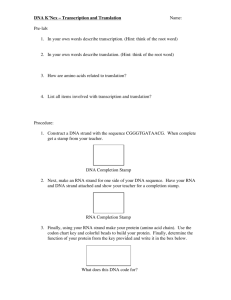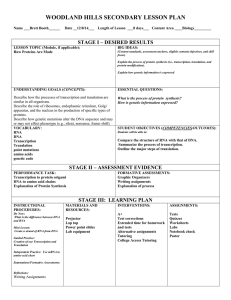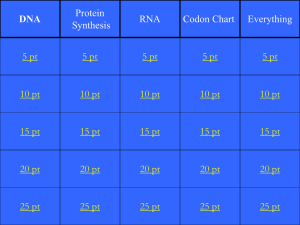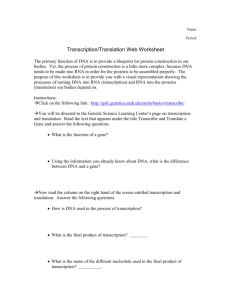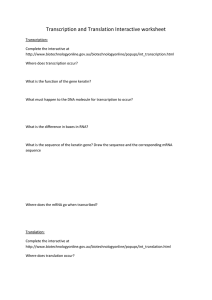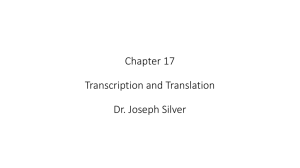From RNA to protein – Key Points
advertisement
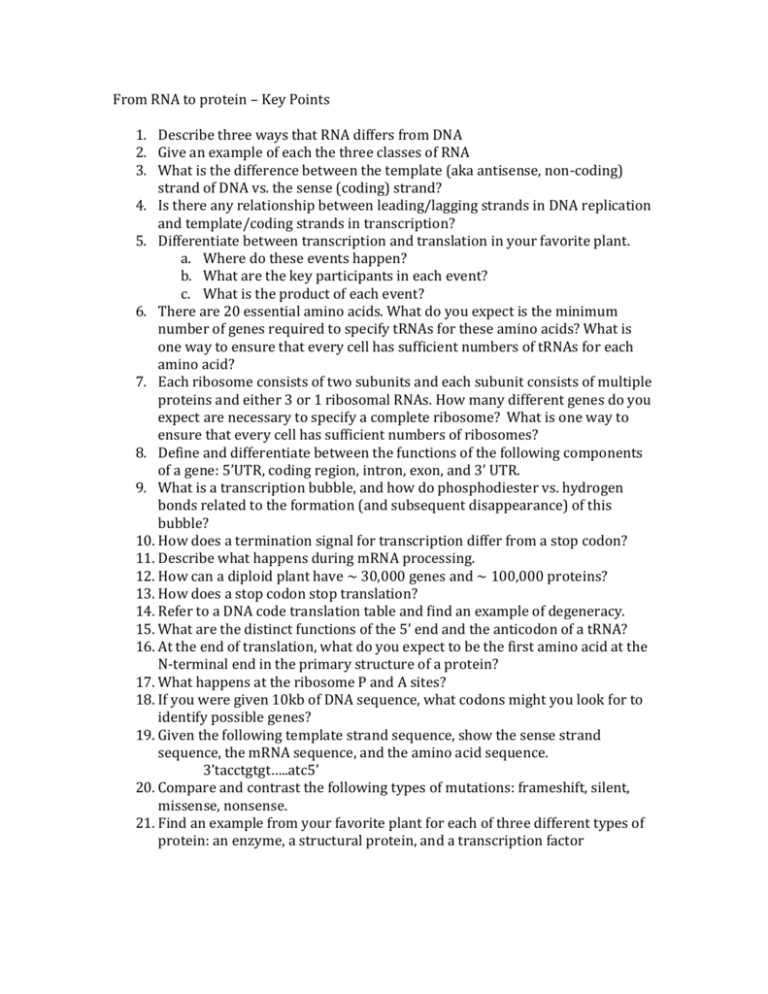
From RNA to protein – Key Points 1. Describe three ways that RNA differs from DNA 2. Give an example of each the three classes of RNA 3. What is the difference between the template (aka antisense, non-coding) strand of DNA vs. the sense (coding) strand? 4. Is there any relationship between leading/lagging strands in DNA replication and template/coding strands in transcription? 5. Differentiate between transcription and translation in your favorite plant. a. Where do these events happen? b. What are the key participants in each event? c. What is the product of each event? 6. There are 20 essential amino acids. What do you expect is the minimum number of genes required to specify tRNAs for these amino acids? What is one way to ensure that every cell has sufficient numbers of tRNAs for each amino acid? 7. Each ribosome consists of two subunits and each subunit consists of multiple proteins and either 3 or 1 ribosomal RNAs. How many different genes do you expect are necessary to specify a complete ribosome? What is one way to ensure that every cell has sufficient numbers of ribosomes? 8. Define and differentiate between the functions of the following components of a gene: 5’UTR, coding region, intron, exon, and 3’ UTR. 9. What is a transcription bubble, and how do phosphodiester vs. hydrogen bonds related to the formation (and subsequent disappearance) of this bubble? 10. How does a termination signal for transcription differ from a stop codon? 11. Describe what happens during mRNA processing. 12. How can a diploid plant have ~ 30,000 genes and ~ 100,000 proteins? 13. How does a stop codon stop translation? 14. Refer to a DNA code translation table and find an example of degeneracy. 15. What are the distinct functions of the 5’ end and the anticodon of a tRNA? 16. At the end of translation, what do you expect to be the first amino acid at the N-terminal end in the primary structure of a protein? 17. What happens at the ribosome P and A sites? 18. If you were given 10kb of DNA sequence, what codons might you look for to identify possible genes? 19. Given the following template strand sequence, show the sense strand sequence, the mRNA sequence, and the amino acid sequence. 3’tacctgtgt…..atc5’ 20. Compare and contrast the following types of mutations: frameshift, silent, missense, nonsense. 21. Find an example from your favorite plant for each of three different types of protein: an enzyme, a structural protein, and a transcription factor
